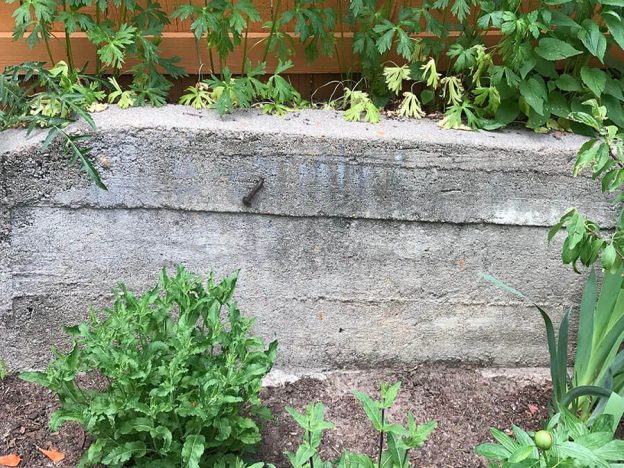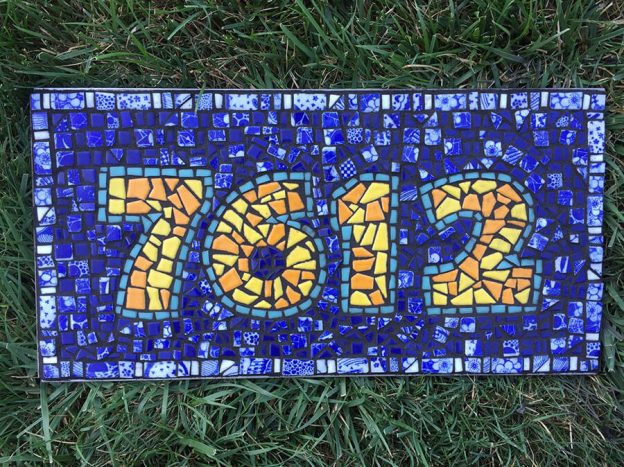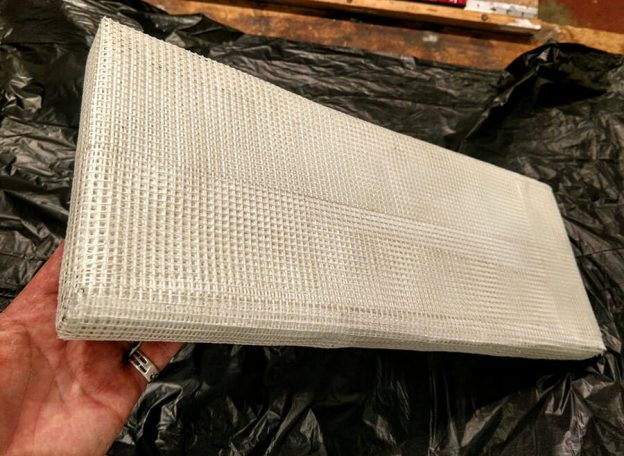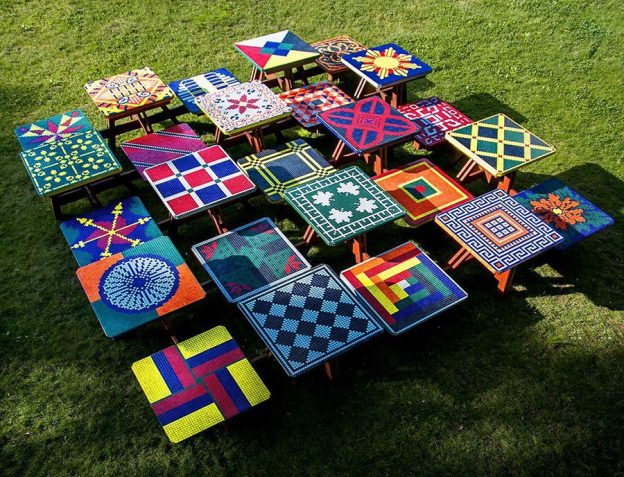Tag: backer board
-

Mosaic Mural Surface Preparation
The best way to mount an outdoor mosaic mural is to use thinset mortar and mount it directly to a brick, stone, or concrete wall. You can make mosaic murals on foam-core backer board and mount these backers onto wooden fences with screws, but that is less than ideal for several reasons, and the weight…
-

Mosaic Letters and Numerals
You can make mosaic street numbers and signs using a grid, but mosaics made from irregular shapes of non-gridded tesserae are more interesting, especially if you use concentric andamento for the background surrounding the figures. Sara Sommers emailed us some pictures of her mosaic street number plaque, and it is made from cut pieces of…
-

Making Foam-Core Mosaic Backers For Outdoor Projects
Artist Jill Gatwood uses the following method to make water-resistant foam-core mosaic backers for exterior mosaics, such as the Pet Memorial Name Plaques she does for clients who need something that is lighter weight and easier to ship than stone or solid concrete. The method wraps the foam in three or four successive layers of…
-

Materials and Methods for Outdoor Mosaic Tables
Artist Risa Puno recently completed her interactive mosaic sculpture Common Ground for Rufus King Park in Jamaica Queens, NYC, and the project is a great example for discussing materials and methods for mosaic table tops. No Plywood Backers Outdoors Plywood is never an acceptable backer for outdoor mosaic table tops. Humidity in outdoor air can…
-
Thinset On Plywood Mosaic Backer?
Thinset mortar can be used on a plywood mosaic backer provided the plywood has been sealed with a white PVA adhesive such as Weldbond. Otherwise, the plywood can suck the moisture out of the thinset before it has a chance to harden leaving it soft and crumbly. It is important to seal the plywood at…
-
Outdoor Mosaic Signs
In the last section of one of my previous posts, Custom Shapes For Mosaic Backers, I showed some pictures and instructions for how I used 3/4-inch expanded steel to make a backer for an outdoor mosaic. The expanded metal was welded together in 3 plies, some mounting bolts were welded to this, and then the…
-
How To Select A Jigsaw For Making Mosaic Backers
Tools Are Cheaper Than Craft Supplies I have often made the claim that a person could buy a sheet of cabinet-grade plywood and a jigsaw for less than what the craft suppliers charge for shaped mosaic backers such as hearts and stars and things like that. While this might be an exaggeration for an individual…
-
How To Make Custom Shapes For Mosaic Backers
Rectangular backers are fine for most mosaic designs, but sometimes you want to make an irregularly-shaped mosaic or a mosaic with a custom shape, such as the silhouette of a common object: tree, automobile, flower, turtle, etc. How you make such a backer and what materials you use depends on whether or not the mosaic…
-
How To Cut Cement Board
Two Types Of Cement Board There are two types of cement board: The first type contains wood fibers or wood particles mixed in with the cement. The second type is portland cement between two sheets of fiberglass mesh. The second type is completely water resistant, and that is what we use in our mosaics when…
-
How To Mosaic a Patio Table
Replace Glass Top With Concrete Board Glass-top metal patio tables can be used to make a mosaic table by replacing the glass top with 1/4 inch concrete backer board. The concrete backer board is roughly the same thickness as the glass top it is replacing, and it can rest on the rim of the metal…
